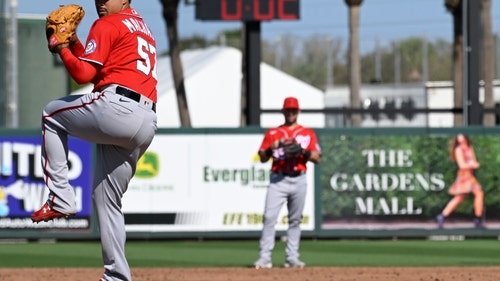
Detroit Tigers: Why Jarrod Saltalamacchia is Better Than We Think

It is no secret that the switch-hitting Jarrod Saltalamacchia finished the 2016 Detroit Tigers season with an abysmal .171 batting average.
It is also no secret that the Detroit Tigers catcher’s .171 batting average does not fully reflect his ability as a hitter. It also does not show how much of an asset he actually was (or could have been) to the team.
In fact, the veteran catcher who signed with the Tigers for a league-minimum salary actually had numbers that were similar to that of his counterpart, James McCann.
While McCann had a significantly better batting average of .221, the rest of his stats at the plate were about the same as Salty’s. For example, McCann had an OPS of .629 while Salty had a .630. This sabermetrics number is actually more representative of a player’s actions at the plate than batting average.
The Value of OPS
Sep 4, 2016; Kansas City, MO, USA; Detroit Tigers catcher James McCann (34) at bat against the Kansas City Royals during the second inning at Kauffman Stadium. Mandatory Credit: Peter G. Aiken-USA TODAY Sports
Since batting average only looks at how often the player actually gets on base – any base, it does not reflect the home runs, doubles, or other situations. OPS does. Even though Salty’s number of hits was lower than McCann’s, Salty managed to hit for power and get multi-base hits at the same pace as McCann did in 2016.
The other number that puts the two catchers neck-in-neck at the plate is their OPS+ numbers. McCann finished 2016 with 70 and Salty finished with 71. The closer to 100 the number is, the better it is. For reference, Miguel Cabrera finished 2016 with an OPS+ of 157. Ironically, in 2013 (the year after his Triple Crown), Cabrera led the league in OPS+ with 190 and has an OPS of 1.078 – which meant he averaged one base for every at-bat.
Walks are Good
Another number that shows how valuable Jarrod Saltalamacchia was despite his batting average was his number of walks. While many baseball fans equate a walk with weakness, a high walk percentage is actually helpful to a team. In his 92 games and 292 plate appearance, he walked 41 times. On the other hand, McCann appeared in 105 games and had 373 plate appearance with 23 walks. Salty walked 14% of the time. McCann walked only 6% of the time.
Since these two were usually in the line-up in front of Jose Iglesias and then Ian Kinsler, more walks could have resulted in more runs scored. Unfortunately, Iglesias did not have a typical season and his OPS (.643) and OPS+ (76) were about the same as the catchers were, so those walks didn’t hurt the opponent like they could have. Had Salty batted right in front of Kinsler, his OPS of .831 and his OPS+ of 124 would have given Salty a better chance at scoring on those walks.
What is quite surprising is that in 81 fewer plate appearances, Salty actually scored one less run than McCann did. Salty crossed home plate 30 times and McCann 31 times. Odds are good that those walks added up to runs.
Salty Had the Best Walk-Rate
In 2016, only five players walked more times than Salty: Miguel Cabrera (75), Justin Upton (50), Victor Martinez (50), J.D. Martinez (49), and Ian Kinsler (45). But, all of those players were everyday players who had more than double the plate appearances. Cabrera’s walk rate was 11%, Upton’s was 7.9%, Victor’s was 8%, J.D.’s was 9%, and Kinsler’s was 6%.
If the Tigers do decide to sign Salty for 2017, they would be wise to place him in front of someone who hits well. Salty obviously has a good eye for pitches and he has the necessary patience to get on base. The Tigers should look at what he does well and use it to their advantage.
More from Motor City Bengals
This article originally appeared on





